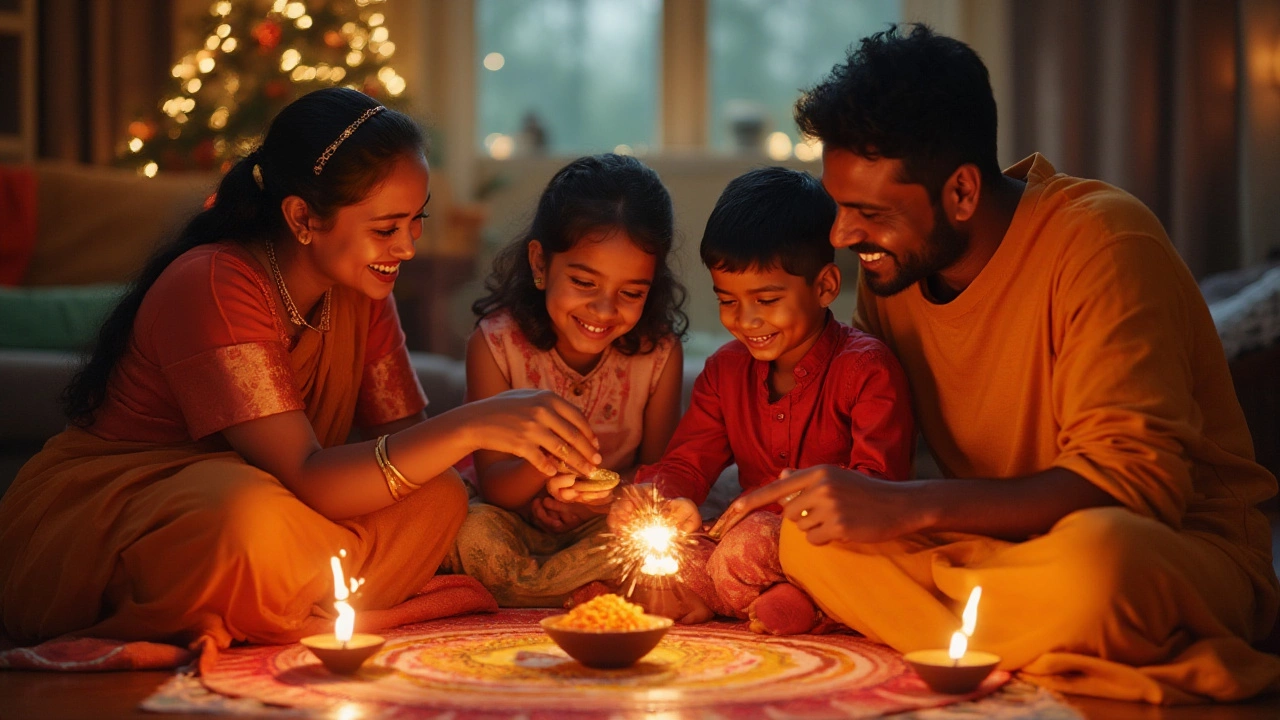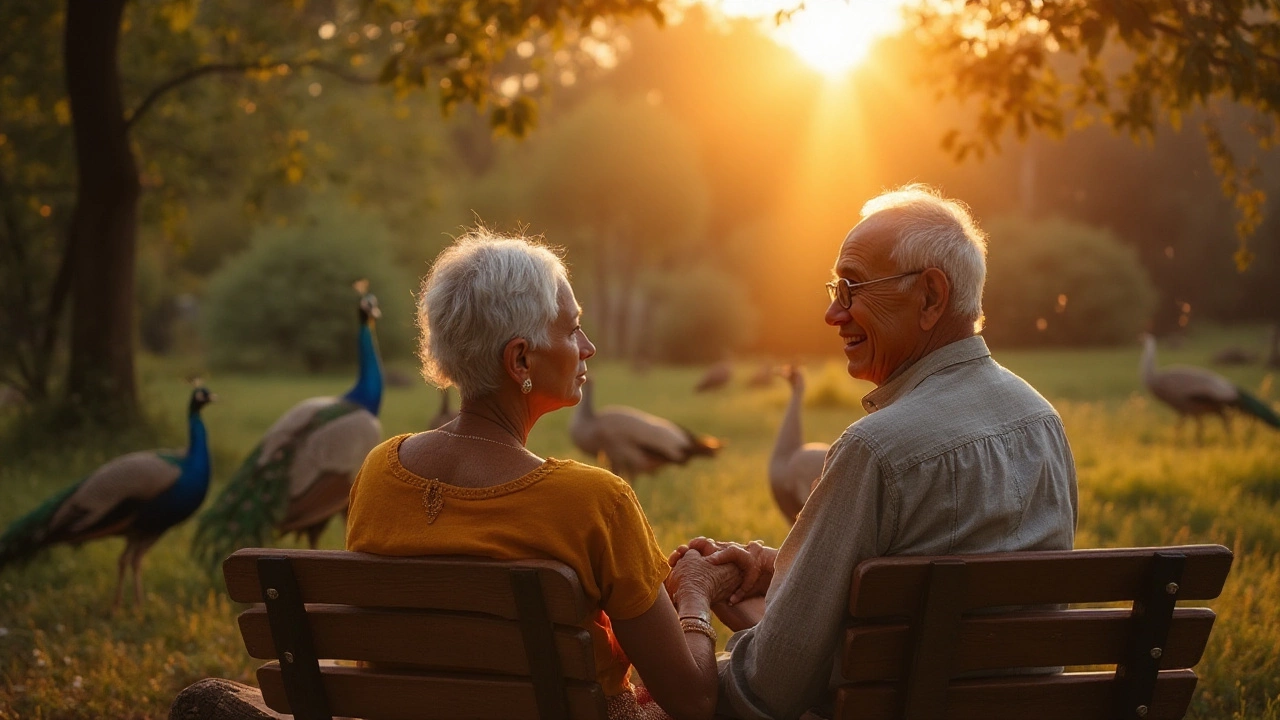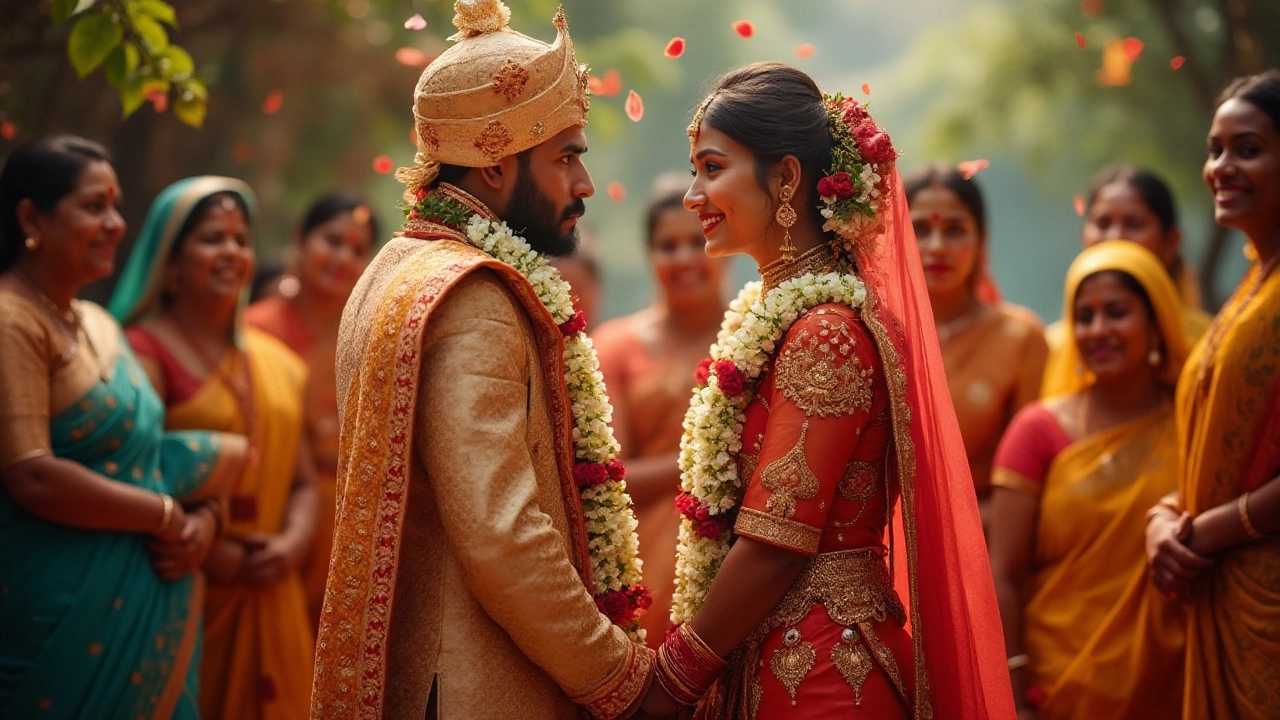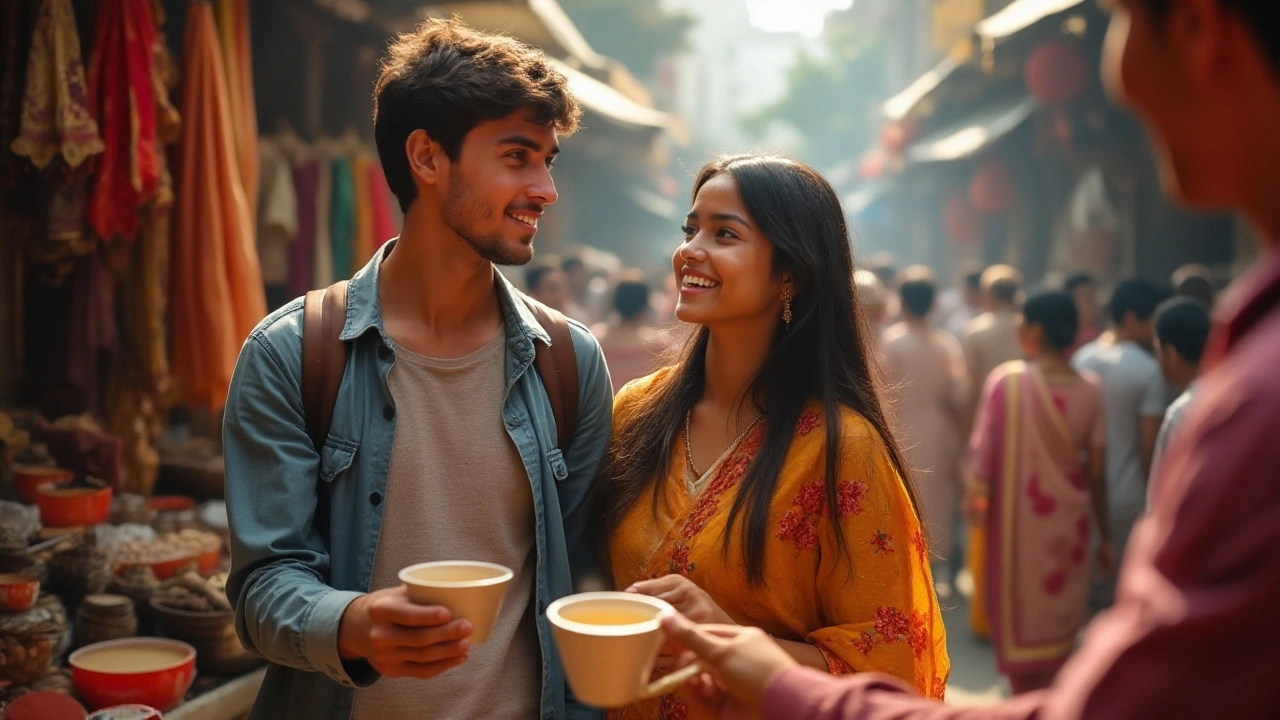Decoding Love: A One-Word Exploration

Love is a word we hear often, but its meaning can be as elusive as a whisper in the wind. For some, love is bliss and for others, it's a mystery waiting to be solved. The challenge of capturing love's essence in a single word is daunting yet intriguing, especially when considering diverse cultural landscapes like India. From tales of ancient mythology to modern-day romantic gestures, love finds itself woven into the fabric of life in myriad ways.
But what if you had to condense this complex emotion into just one word? This question stirs hearts and minds, turning our focus to how love is perceived across different cultures and scientific views. While some may debate love as 'passion' or 'devotion', exploring such perspectives offers an enriching journey into understanding what truly makes this feeling so powerful and universally sought after.
Cultural Interpretations
Understanding the concept of love through different cultural lenses reveals how deeply this emotion is intertwined with societal values, history, and beliefs. Every culture offers a unique flavor to love, influenced by linguistic nuances, traditions, and collective experiences. In India, love is often perceived as a profound journey rather than a mere feeling. It embodies a tapestry of sacrifice, devotion, and communal bonds, deeply rooted in teachings from sacred texts like the Vedas and epics such as the Ramayana and Mahabharata. This cultural backdrop gives love a distinct character in Indian society, where it is celebrated through various forms such as art, festivals, and daily interactions.
The notion of love in different cultures can sometimes be as diverse as language itself. In many Eastern societies, love is painted in shades of family devotion and respect, whereas Western cultures often highlight romantic and passionate aspects. Understanding love through these cultural viewpoints not only illuminates its complexities but also bridges connections between societies. Distinguished psychologist Dr. Robert Sternberg once mentioned, "Love is a story we tell to others about what we've lived."
This idea reinforces that how love is expressed and interpreted tells much about human interactions within cultural settings. Indian wisdom often speaks to the harmony and balance found in relationships, highlighting the importance of unity and shared purpose. Marriage is held with reverence, and familial ties extend well beyond the nuclear family, weaving generations together. Similarly, festivals like Diwali and Holi bring forth opportunities to showcase love in collective celebrations filled with rituals and shared joy.
These culturally grounded practices provide ample instances of love's omnipresence in India. They also highlight how different words can capture its essence—'prem' in Hindi, 'ansuya' in Sanskrit—each carrying varietal meanings from affection to selfless love. Comparatively, in Japanese culture, terms like 'ai' and 'koi' distinguish between deep affection and romantic love, showing the depth and sophistication within these feelings.
The cross-cultural exploration highlights that while love as an emotion is universal, interpretations can be as varied as people's fingerprints. Recognizing this adds to our understanding of interpersonal dynamics and encourages acceptance and empathy among diverse communities across the globe, emphasizing how love, no matter the term, binds us all.

Love in Indian Context
India, a land of diversity, stands as a tapestry of numerous cultures, languages, and traditions, each weaving its unique expression of love. In this vast mosaic, love transcends mere emotion; it is revered as a pathway to spiritual enlightenment and a testament to cultural heritage. From the time-honored narratives of the Ramayana and Mahabharata to contemporary Bollywood romances, Indian culture offers a rich exploration of love's various dimensions. These epic tales consistently highlight love as both boundless and patient, a storyteller narrating the saga of human emotions and the entwining of fate and relationships.
In India, love assumes a multiplicity of forms. Arranged marriages, for instance, showcase an aspect where familial duty and societal norms interlace with personal affection. While the Western world often misconstrues this concept, within Indian society, many believe arranged marriages honor the wisdom of elders who act as guiding stars leading the heart. Such unions highlight that love can be nurtured and grown over time, blossoming within respectful and committed frameworks. The family serves as a supportive garden where love can flourish organically.
Author Chetan Bhagat once observed, "Love marriages around the world are simple: Boy loves girl. Girl loves boy. They get married. In India, there are a few extra steps: Boy loves girl. Girl loves boy. Girl's family has to love boy. Boy's family has to love girl. Girl and boy still love each other. They get married."
The melting pot of India also gives rise to diverse customs celebrating love across different regions. Consider the enduring tradition of Karva Chauth, where women fast from sunrise to moonrise for their husband's well-being and longevity. This practice, steeped in mythos, portrays love not as an ethereal notion but as devoted energy binding partners in unity and care. Moreover, festivals dedicated to Krishna, often synonymous with passion and divine love, illustrate how such cultural rituals immortalize love's expression, blending the spiritual with the corporeal.
Though family and tradition are integral to the Indian narrative, the modern romantic landscape is evolving. Increasing urbanization and globalization play pivotal roles, influencing more autonomous decisions in choosing life partners. Love finds new ways to be expressed through digital interactions and progressive ideologies, offering young Indians a fresh take on age-old practices. Yet, even within modern contexts, the essence of emotions such as deep-rooted respect, unwavering commitment, and the unparalleled joy of a shared life remains relatively unchanged, echoing the harmony of tradition and modernity.
In capturing the essence of love within the diverse Indian milieu, one must appreciate its unique capacity to bridge tradition and modernity, family and personal choice, obligation and desire. Through each contrast and blend, India teaches us the universal truth of love's ability to adapt and endure. Whether in poetic verses recited under monsoon skies or whispered promises shared during sunsets, love, in India, remains a tangible force, tenderly held and fiercely revered by all who experience its profound depth.

The Science of Love
Understanding the chemistry of love often starts with examining what happens in the brain. Love, as an emotion, is not just a product of the heart, it’s deeply rooted in physiological processes. At the core of these processes are a few key chemicals: dopamine, oxytocin, and serotonin. These compounds shape the way we feel, act, and connect with others. Dopamine, commonly linked to pleasure and reward, is especially prominent in the early stages of love, which may explain the euphoric thoughts that accompany new romance. Oxytocin, sometimes known as the 'bonding hormone', plays a significant role during deep connections, such as those found in long-term relationships. Meanwhile, serotonin affects mood and emotional stability, often at lower levels during the blissful stages of a relationship.
Scientists theorize that these chemicals create what is known as the 'love cocktail', working together harmoniously to trigger feelings of happiness and attachment. This biochemical response isn’t arbitrary; it plays a fundamental part in the evolutionary purpose of bringing individuals together for the continuation of the species. Jobs that explore human emotions, like psychology, often use such scientific foundations to understand why people feel such a strong desire for love. Despite these tangible factors, the interpretation of love still hinges on subjective experience and cultural context.
A study from Rutgers University highlights how different parts of the brain activate when a person is in love. Dr. Helen Fisher, a renowned anthropologist, conducted this research and argued that, "Romantic love is not an emotion but rather a drive, as powerful as hunger."
Dr. Fisher's perspective challenges traditional views by suggesting that love is embedded in our biology, compelling us to seek companions.Her findings suggest that people often see relationships as crucial elements for survival, reinforcing social and emotional bonds that support mental health.
The exploration of these topics is crucial when considering cultural perspectives, like those in India, where love isn't just an emotion but entwined with tradition, duty, and social structure. As technology evolves and neuroscience further advances, more complex data charts are emerging, decoding love's mysteries. Here is a simplified breakdown of the effects of key neurotransmitters:
| Chemical | Function | Effect |
|---|---|---|
| Dopamine | Reward/pleasure | Euphoria |
| Oxytocin | Bonding | Attachment |
| Serotonin | Mood regulation | Stability |

Expressing Love
Love is often described as a universal language, one that transcends words and actions. However, expressing this profound emotion can sometimes feel like an art form. In India, love comes alive through a tapestry of traditions, rituals, and everyday gestures. From the intimate clasp of hands to the fragrant garlands exchanged at weddings, love finds a way to express itself vividly in daily life. This act of expression is a journey in itself, sometimes caught in the silent moments shared between loved ones.
Each culture expresses love in its unique way, where subtle cues can speak volumes. While modern-day relationships may lean on digital exchanges—emojis, GIFs, and text messages—the depth of love lies in the moments that aren't easily captured by a screen. In a country like India, where familial bonds form the cornerstone of relationships, expressing love is deeply intertwined with respect and tradition. Love isn't only about grand gestures, but the small deliberate acts—sharing a meal, spending time, or honoring rituals—that nurture bonds over time.
The Language of Traditions
Traditions play a significant role in expressing love, serving as a constant that communities across India hold dear. Festivals like Diwali and Holi are not just celebrations but occasions to revel in communal love and togetherness. These events provide opportunities for families to come together, exchange gifts, and recount cherished memories, reinforcing their bonds. William Shakespeare once said,
"Love is not love which alters when it alteration finds,"a sentiment that resonates when traditions serve as love's unwavering expression amid a rapidly changing world.
The Subtle Art of Gestures
While grand declarations of love hold their charm, it's often the unspoken language that carries the most weight. A tender glance, a gentle touch, or even the act of listening intently can be more telling than words. These gestures form the foundation of emotional intimacy, where love is felt rather than told. Science even backs this—studies have shown that nonverbal cues can be more effective in conveying messages of love than spoken language. This amalgamation of action and emotion is something deeply embedded in daily interactions, where love subtly courses through the fabric of routine.
To know how and when to express love is vital. It's the timing and the sincerity that provide authenticity to these expressions. Whether it's through writing letters—a practice that remains cherished despite technological advances—or participating in family traditions, each display of affection tells a story of relationships and shared histories.